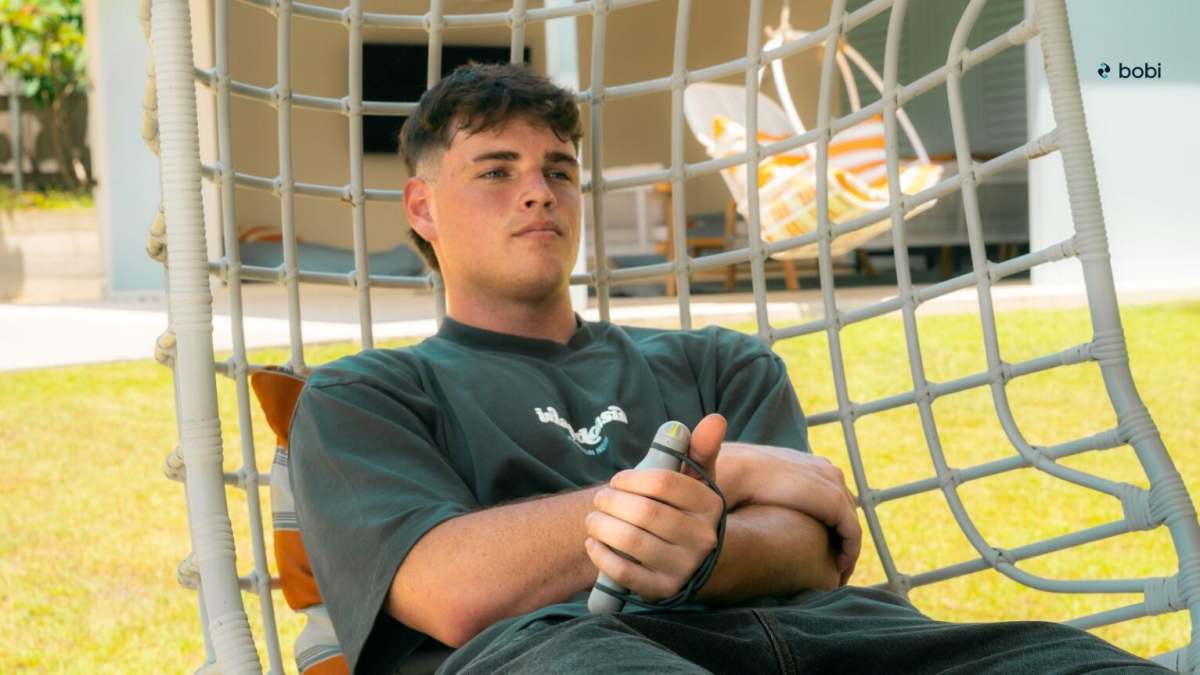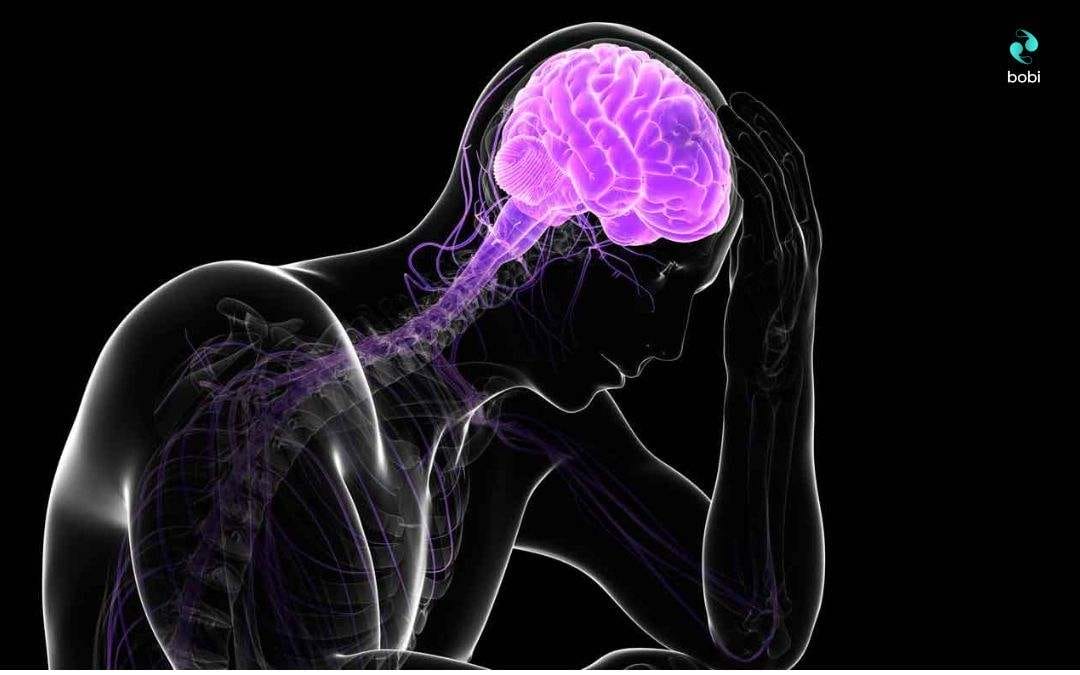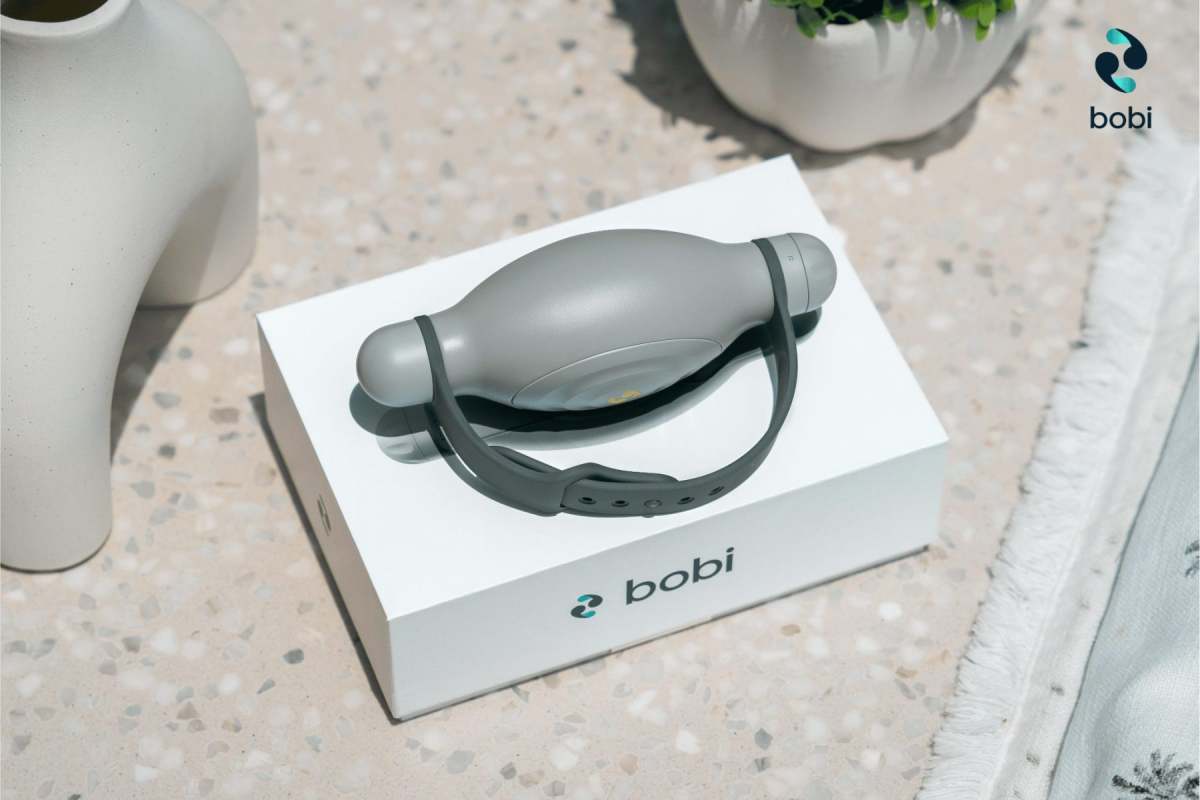
Since the outbreak of COVID-19, mental health challenges – including stress and anxiety – have been at a record high. In this age of anxiety, where many are chasing perfection in every dimension of life, feelings of anxiety, distress, and fear are commonplace. According to the Anxiety and Depression Association of America, nearly 40% of U.S. adults are coping with anxiety disorders. The bombardment of endless information and a culture that encourages the pursuit of extraneous goals has led to a pervasive sickness within society. Managing your mental health, including anxiety, does not need to be expensive or unattainable. Consider digital and innovative healthcare solutions in the form of anxiety relief devices like bobi to relieve your anxiety and stress.
To get maximum benefits from these anxiety relief devices, understanding anxiety and its impact on our daily lives is very important. Let’s get into the details of anxiety and how it affects us.
Anxiety is like a natural alarm in your body that functions to prepare us to react to any potential threats. The body’s natural apprehension tells us what’s possibly going to happen. Our evolutionary past forms the foundation of this biological process. In the brain, a complex interchange happens between neurotransmitters and neural pathways. When there’s a possibility of any threat, the brain activates the amygdala, a part of the brain that is key to emotional management. The activation of the amygdala gets the body ready to enter a ‘fight or flight state‘ by initiating a cascade of reactions.
Consequently, some physical signs of anxiety appear in the body as this fight or flight reaction pushes a gush of adrenaline into the system. This prepares the body for immediate action by heightening senses and getting the muscles ready for action. In real crises, this kind of reaction is considered life-saving, but when it is prompted again and again in harmless situations, it becomes problematic. When this response is activated continuously and unneeded, this results in chronic anxiety. Endless periods of worry and tension, in the absence of genuine peril, describe this state.
Chronic anxiety affects your daily life in profound ways. People suffering from chronic anxiety experience a constant sense of forthcoming doom that pervades almost every task. The physical symptoms of chronic anxiety include a pounding heart, fatigue, and extreme sweating. These symptoms further paralyse an individual and they inevitably struggle to operate as normal. People with chronic anxiety also find it difficult, and sometimes terrifying, to interact with others resulting in a negative impact on personal relationships.
Moreover, people with chronic anxiety struggle to make sound decisions or handle their work tasks efficiently. This profound impact of anxiety doesn’t just affect our health. Rather, it disturbs our social life and professional performance. It reduces the overall quality of one’s life. Furthermore, continuous stress or anxiety may lead to other health issues like depression, heart disease, or a weak immune system.
In this fast-paced world, where many continue to suffer from anxiety, the need for innovative solutions is great. Anxiety relief devices have developed in complexity over recent years, many now incorporate biomarker sensors. These emerging tools are your chance to enjoy mental health therapy benefits in the comfort of your home without breaking the bank.
Experts have crafted anxiety relief devices to reduce anxiety symptoms by incorporating sensory and technological solutions. These devices include wearable devices that manage physiological reactions and non-wearable discrete tools that improve surroundings to foster relaxation.
Anxiety relief devices are sophisticated tools that provide significant natural anxiety relief. They commonly foster relaxation by redirecting attention from a particular stressor to a more neutral or positive mindset or headspace. These devices offer calming sensory input and arm consumers with information that helps them manage anxiety proactively. For instance, with biofeedback devices, you develop an enhanced insight into your physical state and manage your anxiety with personalized techniques. This way, the impact of anxiety is massively reduced.
On the other hand, sensory and environmental devices work to change an individual’s perceptions. When a person engages with their space differently, it tends to change unhelpful beliefs and attitudes. Anxiety relief devices are perfect weapons that guide people towards better mental health, empowering them to feel confident about their capacity to manage life’s stressors, without worrying about anxiety.
bobi is an anxiety relief device that is innovative and breaks the mold of all that has come before it. bobi is a perfect marriage of experience and expertise, developed by Damien Thomas, founder of the device, a psychologist. At the heart of this device is the principle of “optimal breathing,” a fundamental pillar to your mental well-being. Unlike any other device, bobi improves your breathing patterns, a key for the effective management of anxiety. This distinguishes it from other anxiety devices.
bobi’s device is a wearable, handheld companion that fosters optimal breathing practices for its users. An amazing feature that makes it everyone’s favorite is that with bobi, you don’t have to worry about batteries. This portability of the device is a big plus as you can use it anytime, anywhere. Moreover, it gives you a personalized experience. You can adjust its settings to practice at distinct breathing rates to enjoy personalized efficacy and calm.
bobi helps you develop better breathing habits by providing tactile feedback and adding a relieving touch factor to your experience. It’s known that people interact and respond better with tactile devices than with any auditory or visual prompts. Furthermore, squeeze the bobi in your hand for practice; it enhances your hand grip and strength. Numerous clinical studies prove that better grip strength gives you improved cognitive functioning, greater life satisfaction, better overall health, and reduced anxiety or stress symptoms.

The technology behind bobi is the G.E.N.3.6.5 Method. It highlights a structured technique for breathing. This simple method fosters gentle, even nasal breathing in three sessions a day, focusing on six breaths a minute for five minutes in every session to enhance breathing quality. The G.E.N. method is acknowledged scientifically to assist in alleviating stress and stabilizing emotional regulation. The idea behind the utilization of this method is to let you integrate therapeutic breathing into your day-to-day life with ease. It is a successful and natural strategy to handle your anxiety.
bobi attracts attention among anxiety relief devices as it is entirely unique. It works on developing better breathing habits that last a lifetime. bobi lets you enjoy the exercise without any need for electronics or batteries. bobi fosters physical interplay by providing tactile feedback. Such physical interaction is soothing to a user, giving a comforting and unique experience.
We’ve received a lot of feedback from users saying bobi is easy to use, and provides an instant calming effect with its tactile feedback.
As Emma, one of our users, stated: “I’ve been using bobi for over two months now. It’s an incredible tool. I use it every morning as the sun rises during meditation to aid in my breathing. I also now find myself reaching for it during the day. I’ve noticed a significant drop in my anxiety levels since being introduced to bobi. I highly recommend this to anyone of any age. Thank you, bobi.”
Another user, Jay, reported: “With life being so fast-paced nowadays, it was hard for me to relax and take time out for myself; the stress of work and everyday life was taking its toll. bobi helped me with my breath control; it was a great tool to help me tune out and control my breathing patterns without having to spend time controlling my breath. bobi is something I use every day now before I start my day.”
We all prefer to engage with something that is supported by scientific evidence. Do these devices really work to alleviate anxiety? Are they worth buying? These questions are normal.
Well, experts like John Torous, chairperson of the American Psychiatric Association’s Committee on Mental Health Information Technology, said: “There’s a lot of potential in using technology.” “You’re in real-time using different sensors and multimodal data to understand someone’s anxiety or stress, and you’re able to respond immediately in a closed-loop intervention.“
Numerous scientific studies prove the effectiveness of anxiety relief devices with some strong evidence. One such study was published in the National Library of Medicine, in which they explored how effective these tools are in monitoring anxiety or stress. The results are that these affordable devices, representing a combination of technology and clinical expertise, play a crucial role in monitoring mental health issues like anxiety and depression. Moreover, biofeedback technology has been tested and studied thoroughly and has been found to be highly effective at managing anxiety and low mood.
Furthermore, several clinical trials have been conducted on sensory devices like weighted blankets that show that these devices significantly lower anxiety levels. Both adults and children report experiencing deep, comfortable sleep and less anxiety with these blankets, as they offer a balanced, soothing pressure.
Although these innovative anxiety relief devices offer remarkable benefits, they have their limitations, too, which is important to acknowledge. These devices, unfortunately, are going to only work for some. This is because the causes of anxiety vary from person to person, highlighting the fact that their efficacy varies, too.
It’s recommended to use these tools incorporating a comprehensive approach towards anxiety management, including traditional approaches like medication and psychotherapy when required. For the effective incorporation of these devices into your mental health plan, consumers need to talk to their health professional first. This is to ensure that a particular device aligns with your needs.

Let’s explore some practical tips for using anxiety relief devices.
Follow these crucial best practices to enjoy the maximum benefits of anxiety relief devices:
Start your session in a quiet and comfortable surrounding. This will be considered the first positive step towards a better experience and will facilitate a shift in mood state. Once you are familiar with your device, start to use it in different situations, such as in your car or while at your desk at work.
Technology is revolutionizing almost everything; this rapid innovation is also occurring within the field of mental health. State-of-the-art technologies like virtual reality (V.R.) surroundings or AI-driven therapy apps are emerging. AI-driven apps provide a personalized therapeutic experience utilizing user feedback. On the other hand, V.R.’s surroundings teach you how to cope with anxiety whilst using a variety of scenarios.
In this time-poor world, where we’re being introduced to a plethora of information every other moment, managing anxiety can be extremely challenging. Anxiety relief devices can provide an accessible and affordable method of mood regulation. These tools act as a bridge between technology and mental health care. Incorporate bobi – an innovative and mindful anxiety relief device – into your daily life to take an assertive road to improve your mental health.
Dr. Jane Wilson, a clinical psychologist reflecting on anxiety issues, said, “Understanding and managing anxiety is crucial for maintaining mental balance in our fast-paced world. With the right tools and approaches, we can significantly improve the quality of life for those affected by anxiety.“

When it comes to frequency of use, you should use any anxiety relief device according to your own needs and that particular tool’s instructions. However, for bobi, it’s endorsed to utilize it three times a day, taking six breaths per minute in each five-minute session.
Therapy or meditation is important; such devices should complement other treatments, including cognitive behaviour therapy. It’s suggested to use anxiety relief devices in collaboration with professional advice to treat your symptoms efficiently.
Tools like anxiety relief devices are not known to have adverse side effects. Nevertheless, reactions can vary from person to person. The key is to incorporate these devices following the guidelines and under the supervision of healthcare professionals.
Consider your needs, inclinations, and way of life. Make sure your comfort level isn’t disturbed with the device, whether you invest in a simple tactile device or a technology-based tool. Moreover, turning to your doctor in this matter will provide a useful medical perspective.
Yes, anxiety relief devices are safe for children. Consulting with your health professional regarding the appropriate use of these devices – and the age appropriateness – is important.
When you use anxiety relief devices, the results vary extensively from one individual to another. Few individuals will experience instant betterment, whereas others may require constant use of the device for advantages. Your device type and particular situations play a crucial role in results.
When it comes to insurance of anxiety relief devices, it depends on the kind of device and the policy. It may vary from brand to brand. Talk to your insurance provider to make sure your insurance scheme covers a certain tool.
Yes, anxiety relief devices are designed to resolve your sleep problems in the long run, as anxiety and stress are major contributors to bad sleep patterns.
Yes, normally, there’s no harm in incorporating anxiety relief devices into your daily routine while you’re following the stated guidelines and under the direction of your healthcare professional.
You can increase the effectiveness of your particular anxiety relief tool by integrating the device into your daily life, complementing broader well-being patterns. Moreover, you can personalize its settings to align with your particular needs.
Yes, anxiety relief devices can treat your other mental health challenges like stress and depression by enhancing your emotional well-being and fostering relaxation.
Yes, there’s no harm in utilizing multiple anxiety relief devices together. However, it’s better to select devices that complement each other and treat distinct facets of anxiety management to enjoy better outcomes.
Stay updated on what's happening at bobi, and all things breathing, anxiety and mental wellness.